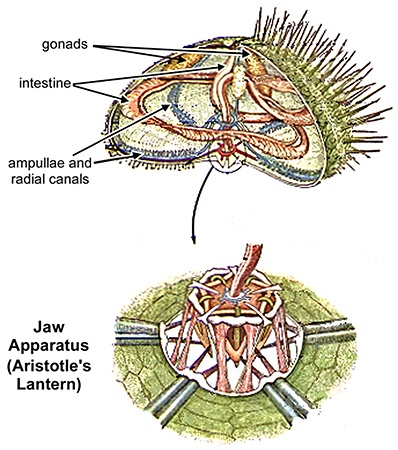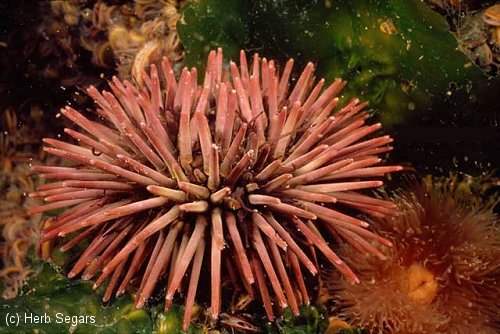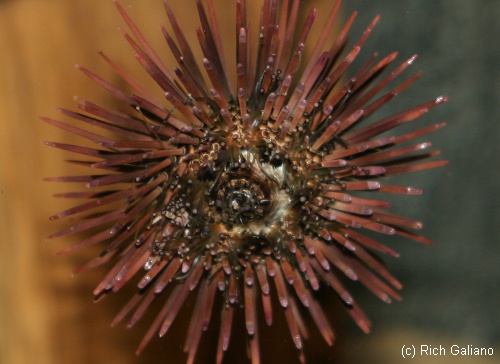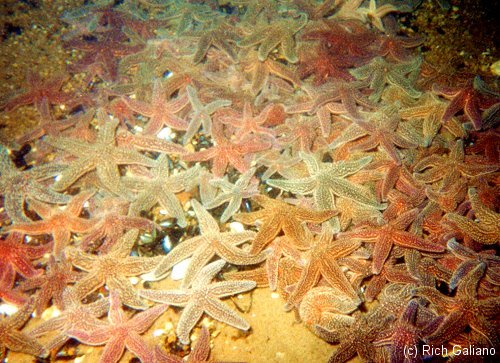Purple Sea Urchin
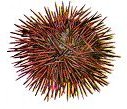
Arbacia punctulata
Size: to 3"
Sea Urchins may be found on any solid structure, from tidal rocks to deep wrecks, although in our region they are more common in shallow estuarine waters than offshore.
This animal is related to the starfish, and shares many of its traits, with one exception. Starfish are predators, feeding upon clams and mussels, while these sea urchins are strict vegetarians. I once ordered Sea Urchin at a sushi bar, but I never even tasted it, it smelled so bad. Nonetheless, it is a delicacy in much of the far east. Unlike tropical black urchins, our northern ones are not poisonous, and the spines are not even particularly sharp.
